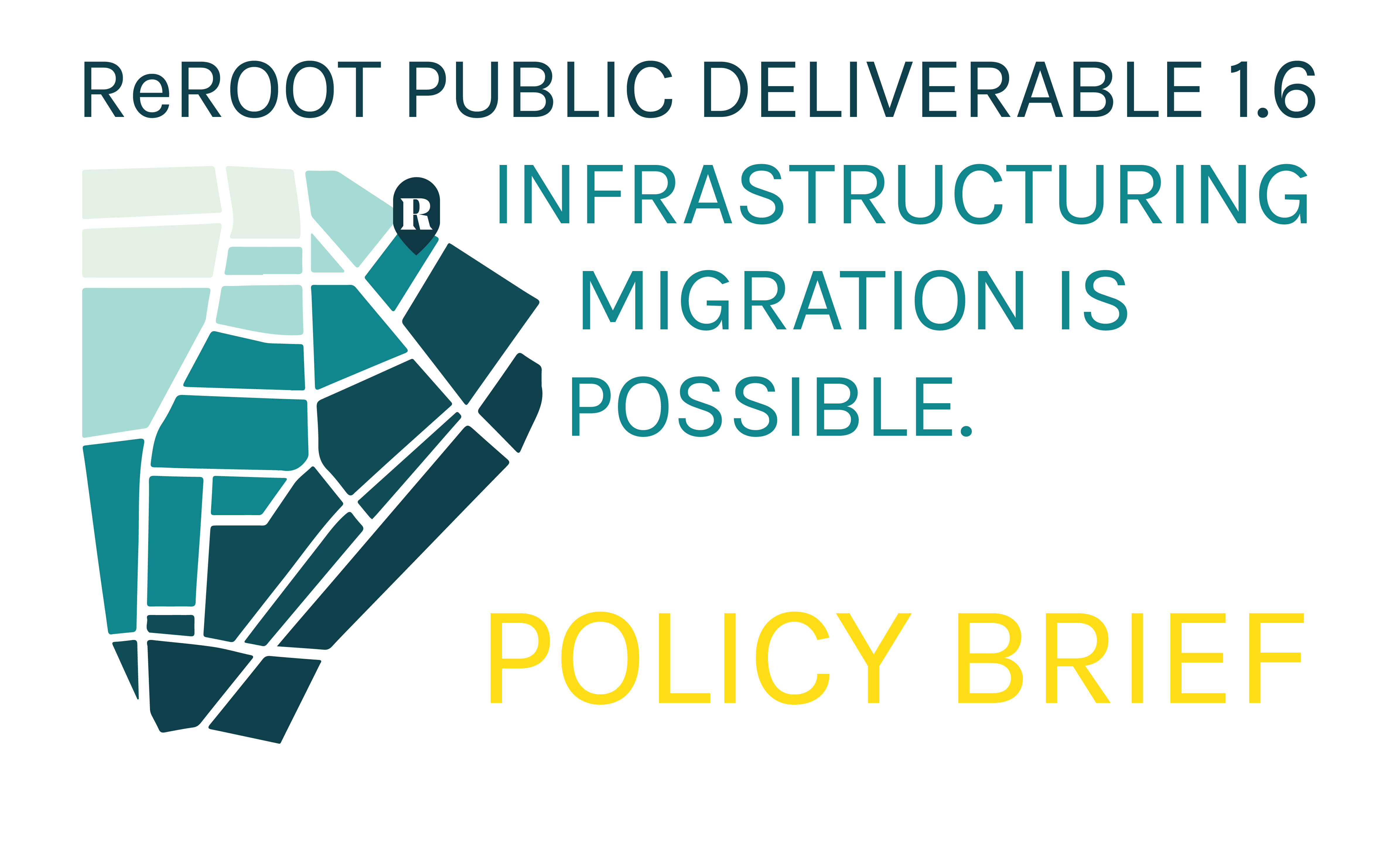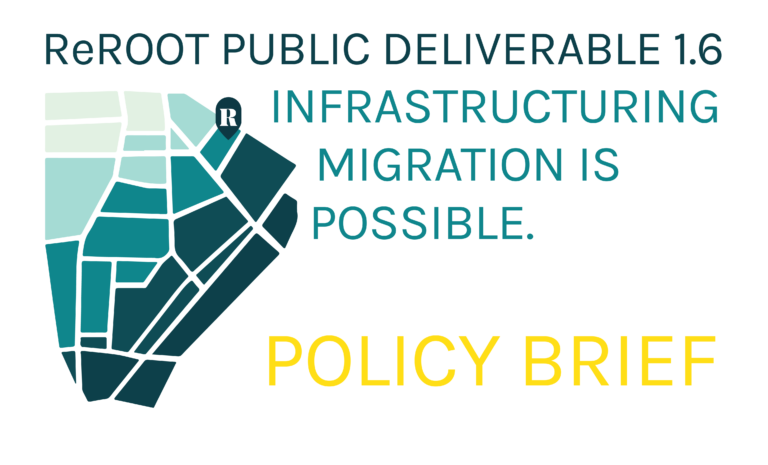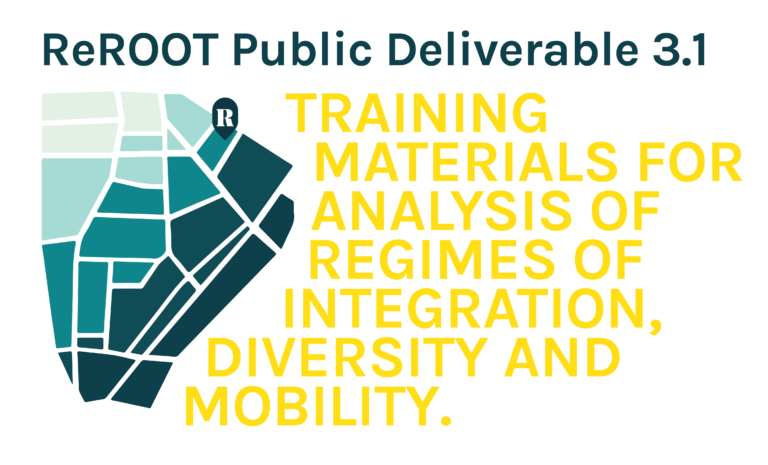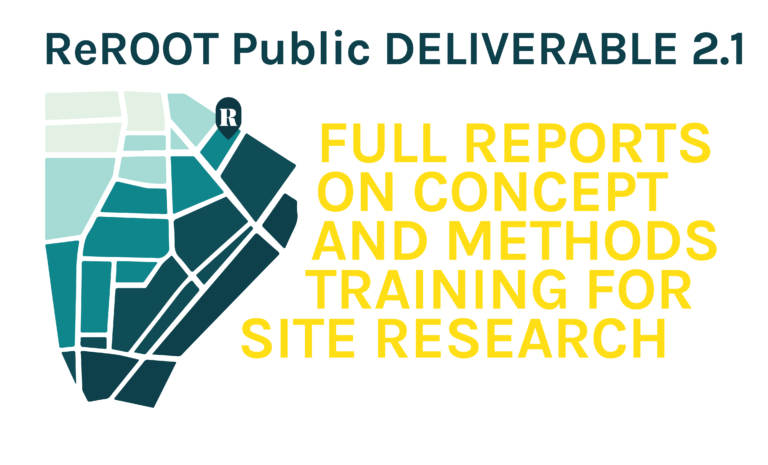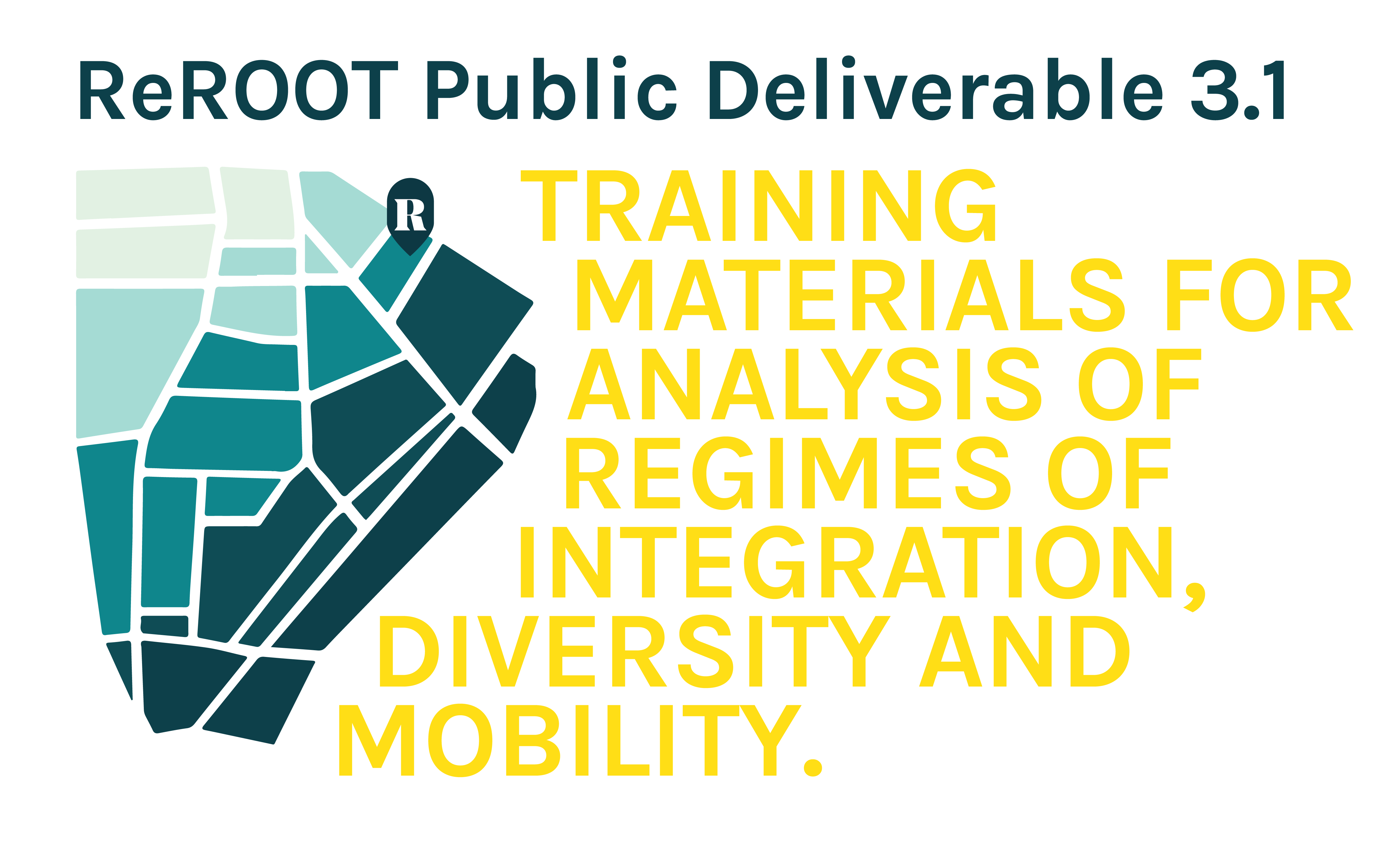
TRAINING MATERIALS FOR ANALYSIS OF REGIMES OF INTEGRATION, DIVERSITY AND MOBILITY
by Malmö University & by KU Leuven
The purpose of WP 3 is to upscale and re-embed the results from WP 2 for further use in later stages of the pro-ject. The WP 2 results will describe the very context-specific intricacies of arrival infrastructures (T 2.2) – their historical transformation, their present-day makings, and their transformation in the turbulent years of immi-gration into Europe after 2015. By upscaling we mean situating these results in broader ‘contexts’ related to forms of regulation and control informed by e.g. local and national policies and practices on migration and inte-gration. These we call regimes of diversity and mobility (Glick Schiller and Salazar 2013, Grillo 2010), as they re-present models of coping with diversity related to mobility and migration, e.g. defining who is included in or ex-cluded from the nation state. Furthermore, regimes of diversity and mobility inform ideologies of integration (Favell 2016, Olwig & Paerregaard 2011, Rytter 2018) in defining who is ‘integratable’ and how. These regimes consist of a reflexive process of external ascription – attribution of legal status, racial or ethnic profile, cultural or religious identity, etc – and self-identifications – the double process of subjectification (Fassin (2011) that affects migrants´ social mobility and aspirations in important ways. The regimes lead local lives and co-constitute the site-specific arrival infrastructures.
The upscaling effected by WP3 has first of all a methodological function of training (T3.1) the site researchers. After the researchers have familiarized themselves with the different sites, they will be trained to identify and describe the local ‘regimes of diversity and mobility’ and ‘ideologies of integration’ at work in their specific sites. This task supports the researchers of WP2 first of all to add this dimension to their analysis of, and in-sights into, the workings of the site specific arrival infrastructures, and secondly to report their findings back to the WP 3 researcher. These reports form the basis of the second form of upscaling. The local site-specific re-gimes and ideologies also lead translocal lives far beyond their confines: in national and regional (EU/European/Western) and global ideoscapes and governmentalities. The objectives of developing this training material can thus, quoting the description of action, summarized as:
1. Providing site researchers the necessary theoretical research support on integration and regimes of diversity and mobility.
2. Enabling T3.2 by tailoring the input from WP2 to the needs of the WP3 researcher in order to be able to start the cross-site comparative and comprehensive research on AI in relation to local and translocal regimes of diversity & mobility.
Share
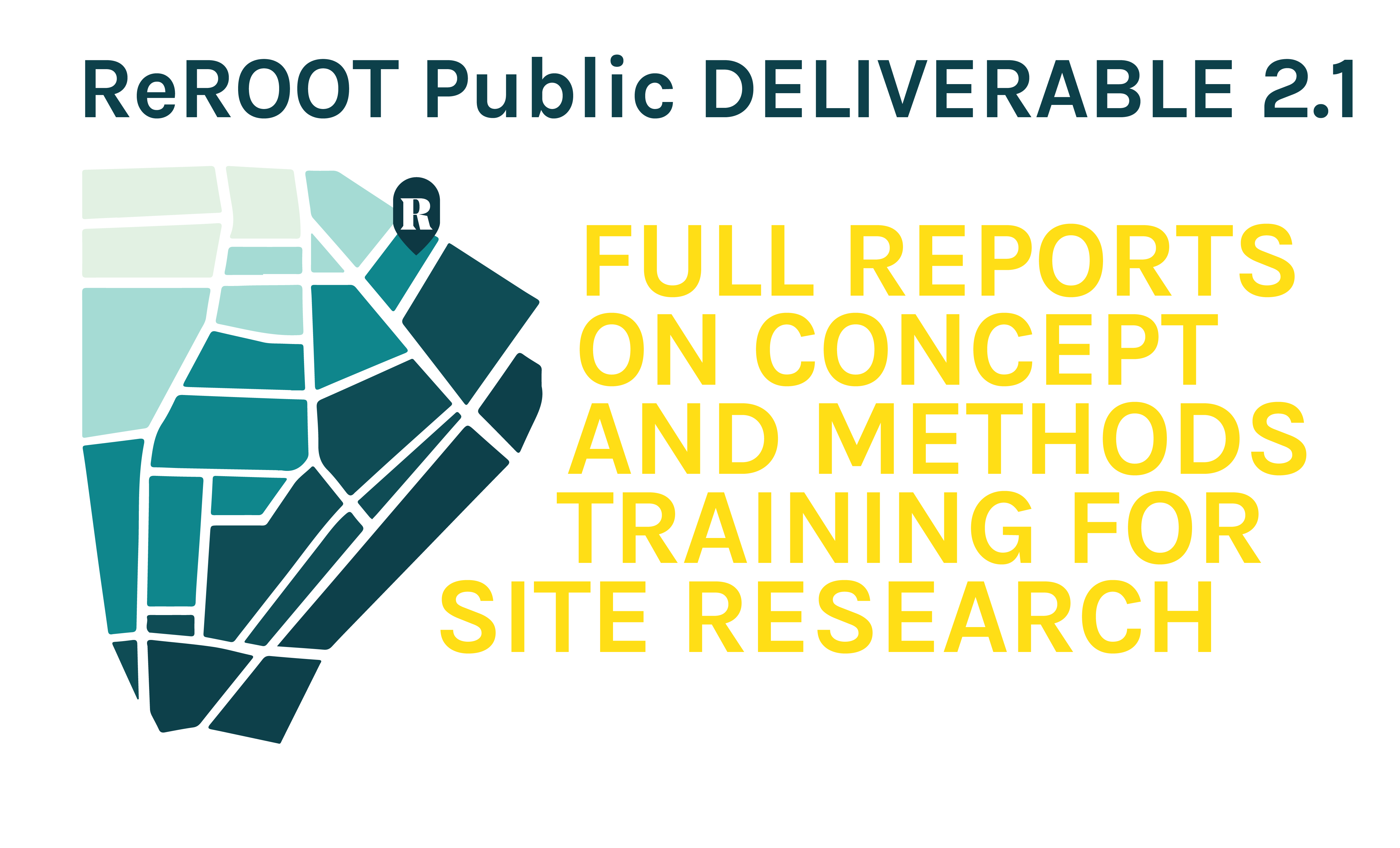
FULL REPORTS ON CONCEPT AND METHODS TRAINING FOR SITE RESEARCH
by Susanne Wessendorf & by Kristen Biehl
This report is about the trainings delivered as part of WP2 (Arrival Infrastructure Site Research) of the ReROOT project, a work package consisting of the following three main tasks: “Research methods training & support for AI site research” (T 2.1), “AI Site research” (T 2.2.) and “Cross site exchange and compilation” (T 2.3.).
As de-scribed under the ReROOT Description of Action, the first task of WP2 involved conceptual and methodological training for the ReROOT field researchers (postdocs, PhDs) to prepare them to undertake field site research un-der the second task.
Trainings started in M2, as foreseen but were turned into a form of blended (online/offline) training. The following report summarizes the implementation of the training delivery plan. This is followed by a detailed overview of the content of the 7 trainings delivered. These materials include Power Point presentations, lectures in the form of video clips, literature lists and introductory documents.
The written versions of the train-ing materials listed in these individual training reports can be found in the annex of the report available upon request.

